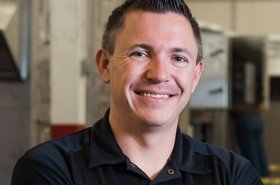In a rapidly evolving IT environment, a flexible and hybrid approach to IT has become commonplace and future proofing requirements remains a key challenge. This debate explores next-gen development delving into challenges and discussing best practice.
Is a rigid process critical to efficiently developing purpose-built facilities? What role should flexibility and collaboration play in building your next gen data center? We will address these and other key questions around developing next gen data centers with a focus on speed to market, cost and flexibility.
Tune in to hear the answers to these questions from our expert panel featuring: Michael Silla, SVP DC Design & Construction - Flexential, Matthew Tobolski PHD, SE President, Founder - Base X Solutions and Brian Probst Project Executive - Skanska.
Setting the context
How has the industry evolved over the past decade or so? The panel weighs in on the changes in data center development from a planning and design perspective. For Michael Silla, this starts with the mission of the company: bringing infrastructure to the market. The goal for Silla is to bring together the best teams available. By having partners, consultants, contractors and vendors in the loop early it facilitates a ‘one team, one vision’ approach, while still encouraging different ideas and perspectives.
Both Brian Probst and Matt Tobolski had similar views. The process has moved away from traditional processes which were tight knit, secretive planning meetings. The downside to this approach was the lack of group access to the design process, meaning problems that could be addressed early on by other collaborators were not picked up until the project was handed over.
Some other changes panel members mentioned was the shift to bring modelling upfront, which has allowed for higher levels of predictability. Additionally, this has increased intimate knowledge of the product in field teams, leading to further opportunities to identify components that can be pre-fabricated and where modularity can be incorporated early one in the process.
Aligning teams and missions
Silla mentions having the mission helps guide the metrics you will measure success by, but you also need an understanding of the very metrics you are trying to meet. It is important to have multiple options, and diverse opinions, not just a single person’s opinion in a vacuum. By getting a group together at a table, you are able to set the vision more successfully and help define the mission.
Ever-changing demands
We also asked the panel to discuss how client's demands have changed over the past few years. The main consensus was that clients are looking for infrastructure on demand. Changes in demand for services (particularly with the global pandemic at hand) means clients need quick to market solutions that are flexible and can support different environments.
Probst also raised how sustainability and green energy certifications have become increasingly important to clients. Some of this is tied to social responsibility, but has also been tied to economic viability. This goes hand in hand with increased rack density, meaning power supply becomes a key concern for clients.
Speed to market is also a main driving force in client’s demands. The ability to quickly respond to new needs and quick deployment capacity in short time frames is a an important factor in the design and planning of data centers. Being able to have capacity ready and available has meant that adaptable technology has been implemented to help future proof designs for clients.
A need for speed
On-demand infrastructure has been a major response to the end market. Key relationships with vendors and suppliers has been expanded, meaning more people at the table in the initial planning processes to look at whats next. The questions have shifted to ‘how do we adapt existing facilities’, rather than just ‘we need a new one’.
Having more than one way to do something means clients can choose something that is attractive to them, and will suit their needs. They want facilities and technologies that are easy to operate and have minimal risk. This has impacted standardization practices, i.e. how do we apply the same designs to different builds? Modularization becomes a key solution as it allows data centers to have an infinite life cycle.
The increase in large building blocks means only some components need to be changed in order to suit client’s needs. This provides value back to customers by giving them energy efficiency and future proofing the build with adaptable solutions.
Growth or stagnation? The future of data centers
We asked the panel whether there will be more data centers in the future, especially with the deployment of edge computing. A lot of more modularised and pre-fabricated components have been included in future data center designs. New data centers are needed everyday, but there will be an increase in replacement of older facilities rather than a total increase in new builds.
Technology becomes key - how can it be adapted to suit customer needs without throwing away current systems. The futureproofing process becomes central to ensuring that facilities across the globe are best equipped, and extends their life cycle and capabilities for clients.
Get access to the free, on-demand webinar to hear how the panel answer burning questions from the audience.
Our panel members
-

Michael Silla
-

Matthew Tobolski PHD, SE
-

Brian Probst

